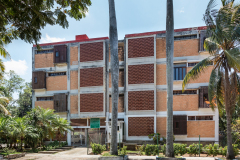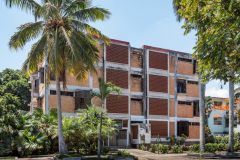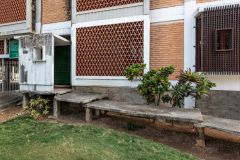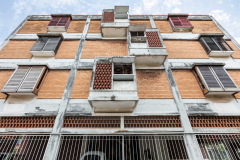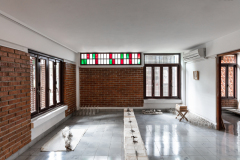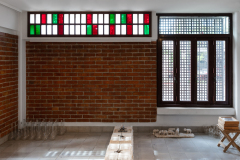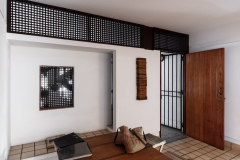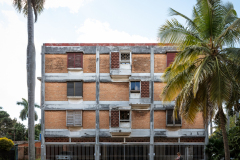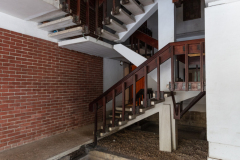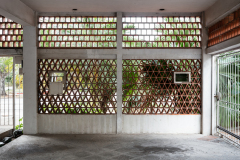Edificio Vidaña
Mario Romañach
Miramar
1956
Contrary to most apartment buildings of the period, the four-story Edificio Vidaña is totally introverted and does not display any open balcony or terrace.[i] Here, the tropical meets the Mediterranean. In each of the two apartments per floor, separated by the north-south circulation axis, Romañach unveils his mastery of the “modern poché,” both in the functional organization of the interior, but even more so in the materiality —both structure and skin— of the moucharabieh that activate the four facades. On all facades but the northern one, Romañach plays a game with the thickness of the horizontal bands of concrete, the lightness of the wooden “boxes” —those are made of wooden lattice within which he sometimes puts a small window— the large perforated ceramic planes that ventilate the service areas, and the hybrid concrete balconies that combine windows and louvers. The northern façade —which also includes an apartment on the ground floor— is entirely different materially, as the architect pushed the brick walls out and framed them by cantilevering the concrete slabs, here reduced to the expression of their exact thickness.[ii] The building does not have a courtyard but the spectacular staircase functions as one. In a glimpse to Adolf Loos and the open plan, the apartments open to the staircase with a screened interior bow-window that not only permits a discreet control of the circulation, but also creates a spatially powerful cross-axis between the two apartments.
[i] Album de Cuba, Vol 6, n.p.; Rodríguez, The Havana Guide, pp. 100-01; La arquitectura del movimiento moderno, pp. 90-91; and Gómez Díaz, De Forestier a Sert, pp. 544-48.
[ii] This ground floor apartment was Martín Rodríguez’s last residence before leaving Cuba. See Gómez Díaz, De Forestier a Sert, pp. 544-58.
